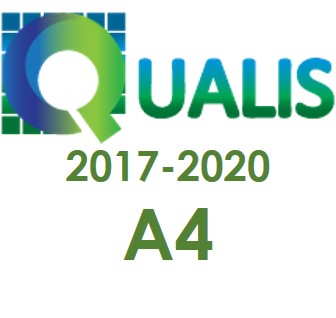Study of the interlanguage of deafs, users of Brazilian Sign Language, in the acquisition of Brazilian Portuguese
DOI:
https://doi.org/10.22481/el.v8i1.1122Keywords:
Language acquisition, Brazilian Sign Language, L2 Portuguese, Definite generics, Bare nounAbstract
The study examines the interlanguage of deafs (users of the Brazilian Sign Language) learning Portuguese as a second language. In particular, the manifestation of bare nominals (in the singular) and definite generics (in the singular and in the plural) is taken into consideration. The high frequency of singular bare nouns is analysed as L1 transfer, given that LSB does not have (definite) articles. Assuming that number is an interpretable feature on the generic definite DP, it is proposed that the linguistic development takes place through the syntactic mapping of morpho(phono)logical properties of the (plural) definite article on the functional head Number.
KEYWORDS: Language acquisition. Brazilian Sign Language. L2 Portuguese. Definite generics. Bare noun.
Downloads
References
ALEXIADOU, A.; HAEGEMAN, L.; STRAVOU, M. Noun Phrase in the generative perspective. Berlin: Mouton de Gruyter, 2007.
BERENT, The acquisition of English syntax by deaf learners. In: RITCHIE, W.; BHATIA, T. (ed.) The handbook of second language acquisition. San Diego: Academic Press, 1996. p. 469-506.
BERNSTEIN, J. The DP hypothesis: identifying clausal properties in the nominal domain. In: COLLINS, C.; BALTIN, M. (ed.). The Handbook of contemporary syntactic theory. Oxford: Blackwell, 2001.
CHAN-VIANNA, A. Aquisição de português por surdos: estruturas de posse. Dissertação (Mestrado em Linguística) - Universidade de Brasília, 2003.
CHAN-VIANNA, A. Estruturas de posse na aquisição de português por surdos. Papéis: Revista de Letras, v. 7, n. especial, pt. 1, jul/dez, p. 9-17, 2004.
CHAN-VIANNA, A. Opcionalidade no português não nativo de surdos falantes de Língua de Sinais Brasileira: o sintagma nominal. Documento de Qualificação de Tese de Doutorado, Universidade de
Brasília, 2008.
CHOSMKY, N. Knowledge of language. Its origin, nature and use. New York: Praeger, 1986
CHOSMKY, N. The minimalist program. Cambridge: MIT Press, 1995.
EPSTEIN, S.; FLYNN, S.; MARTOHARDJONO, G. Second language acquisition: theoretical and experimental issues in contemporary research. Behavioral and Brain Sciences, v. 19, n. 4, p. 677-714, 1996.
FELIPE, T. Introdução à gramática da LIBRAS. In BRASIL, Secretaria de Educação Especial. Língua Brasileira de Sinais, vol. III, Série Atualidades Pedagógicas, n. 4, p. 81-123. Brasília: SEESP, 1998.
FERREIRA BRITO, L. Por uma gramática de línguas de sinais. Rio de Janeiro: Tempo Brasileiro/UFRJ, 1995.
HEIM, I. The Semantics of Definite and Indefinite Noun Phrases. Massachusetts. PhD Dissertation. Amherst, GLSA, University of Massachusetts, 1982.
KLEIN, E.; MARTOHARDJONO, G. Investigation second language grammars: some conceptual and methodological issues in generative SLA research. In: KLEIN, E.; MARTOHARDJONO, G. (ed.). The
development of second language grammars: a generative approach. Amsterdam: John Benjamins, 1999. p. 3-34.
KRIFKA, M.; PELLETIER, F. J.; CARLSON, G.; TER MEULEN, A.; CHIERCHIA, G.; LINK, G. Genericity: an Introduction. In. Carlson, G.; Pelletier , F. J. (ed). The generic book. Chicago: Chicago University Press, 1995. p. 1-124.
LENNEBERG, E. H. Biological Foundations of Language. New York: Wiley, 1967.
LONGOBARDI, G. Reference and proper names. Linguistic Inquiry, n. 25, p. 609-65, 1994.
LOPES, R.; QUADROS, R. Traços semânticos na aquisição da linguagem: há efeitos de modalidade de línguas?. Revista da ABRALIN, v. 4, n.1-2, p. 75-108, 2005.
MULLER, A. L. A expressão da genericidade nas línguas naturais. In: Muller, A. L.; Negrão, E. V.; Foltran, M-J. Semântica formal. São Paulo: Contexto, 2003. p. 153-172.
NEIDLE, C.; J. KEGL; D. MACLAUGHLIN; B. BAHAN; R. LEE. The syntax of American Sign Language. Functional categories and hierarchical structures. Cambridge: MIT Press, 2000.
ODUM, E. P. Ecologia. Rio de Janeiro: Discos CBS, 1985.
QUADROS, R. Phrase structure in Brazilian Sign Language. Tese (Doutorado em Linguística) - Pontifícia Universidade Católica do Rio Grande do Sul, Porto Alegre, 1999.
QUADROS, R.; KARNOPP, L. Língua de Sinais Brasileira: estudos lingüísticos. Porto Alegre: Artmed, 2004.
SANTOS, D. Estudos de língua de sinais: um contexto para a análise da Língua Brasileira de Sinais (LIBRAS). Tese (Doutorado em Linguística) - Universidade Federal do Rio de Janeiro, Rio de Janeiro,
2001.
SCHWARTZ, B. The second language instinct. Lingua, n. 106, p. 133-160, 1998.
SCHMITT, C.; MUNN, A. Against the Nominal Mapping Hypothesis: Bare Nouns in Brazilian Portuguese. Proceedings of NELS, v. 29, p. 1-15, 1999.
SMITH, N. V.; TSIMPLI, I. M. The Mind of a Savant: Language Learning and Modularity. Oxford: Blackwell,1995.
SORACE, A. Initial states, end-states, and residual optionality in L2 acquisition. Proceedings of the 23rd Boston University Conference on Language Development. Sommerville, MA: Cascadilla Press, 1999. p. 1-21.
SORACE, A. Near-nativeness. In: DOUGHTY, C.; LONG, M. (ed.) Handbook of Second Language Acquisition. Oxford: Blackwell, 2003. p. 130-152.
TSIMPLI, I.-M. (2004). Features in L1 and L2 acquisition: evidence from Greek clitics and determiners. In: H. Hendricks (ed.) Analyse comparative des processus d'acquisition en L1 et L2, Special Issue of AILE (Acquisition et Interaction en Langue Étrangère), v. 20, p. 87-128, 2004.
TSIMPLI, I. M.; ROUSSOU, A. Parameter-Resetting in L2. UCL Working Papers in Linguistics, n. 3, p. 149-69, 1999.
TSIMPLI, I.-M.; STAVRAKAKI, S. The effects of a morphosyntatic deficit in the determiner system: the case of a Greek SLI child. Língua n. 108, p. 31-85, 1999.
WHITE, L. Second language acquisition and universal grammar. Studies in Second Language Acquisition, v. 12, p. 121-33, 1989.
WHITE, L. Second Language Acquisition and Universal Grammar. Cambridge: Cambridge University Press, 2003.
Downloads
Published
How to Cite
Issue
Section
License

Estudos da Língua(gem) is licensed under a Creative Commons Attribution 4.0 International License.
Authors who publish in the journal Estudos da Língua (gem) agree with the following terms:
The journal Estudos de Língua(gem) maintains the copyrights of the contributions published. These rights include the publication of the contribution and make its content available for free through the portal.







